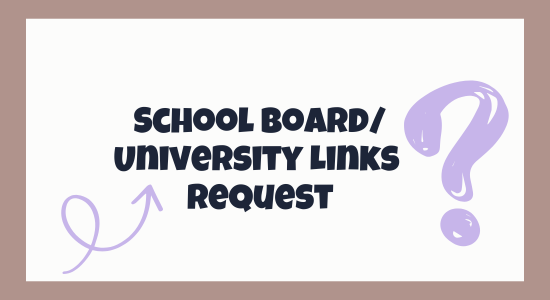
How Students Can Contribute to a Sustainable Energy Future
Introduction (Problem): Feeling Powerless in a Power-Hungry World?
You’ve probably heard it in class, seen it on the news, or scrolled past it on social media—climate change is accelerating, fossil fuels are running out, and global energy consumption is rising. As a student, it’s easy to feel like this is a world-sized problem that only governments, scientists, or billion-dollar companies can solve.
And so, the question naturally follows:
“What can I do about the future of energy? I’m just a student.”
This is a common mental block. You’re studying, juggling assignments, exams, maybe even a part-time job. Saving the planet might sound noble, but it often feels out of reach. The idea of "sustainable energy" can sound vague or too big to handle.
Why Misunderstanding Your Role in Energy Sustainability Can Backfire
Here’s the thing—thinking your role is too small can lead to bigger problems, both for your academic development and the real world.
Academically:
Students who think energy sustainability is someone else’s responsibility tend to disengage from subjects like environmental science, physics, or economics. This makes it harder to understand related concepts like:
- Energy efficiency
- Carbon cycles
- Climate policy
- Technological innovation in energy
You may miss out on exciting research opportunities or careers in renewable energy, sustainability consulting, or green engineering.
In Real Life:
Let’s fast forward 10 years. You’ll be paying electricity bills, driving (or riding in) electric vehicles, and voting on policies that affect how energy is produced and used. If you’re not energy-literate now, you might:
- Fall for misinformation
- Waste energy unknowingly
- Support policies that harm the environment
- Miss chances to save money or innovate in your own community
Worse still, the window for impactful climate action is closing. The choices we make today directly shape the energy future of tomorrow. Students are not future leaders—they are current change-makers.
How You Can Make a Real Difference—Step by Step
Let’s break this down practically. Here’s how you, as a student, can actively contribute to a more sustainable energy future.
Step 1: Understand What “Sustainable Energy” Really Means
Before you act, you need clarity.
Sustainable energy is energy that:
- Comes from renewable sources (like solar, wind, hydro)
- Has minimal environmental impact
- Is efficient and reliable for long-term use
Contrast this with non-renewable sources (coal, oil, natural gas) which:
- Release harmful greenhouse gases
- Are limited in supply
- Contribute to global warming and pollution
Key Fact:
According to the International Energy Agency (IEA), fossil fuels still account for over 70% of global energy use. Shifting this balance is urgent—and you’re part of the shift.
Step 2: Reduce Your Personal Energy Footprint
Think of your daily habits. How much energy do they use?
Simple, impactful actions:
- Unplug chargers when not in use
- Switch to LED bulbs in dorms or at home
- Use public transport, walk, or cycle
- Turn off devices—not just screens—when done studying
- Avoid overusing heaters or air conditioners
Case Study: University of California System
The UC campuses collectively saved $32 million over 10 years through student-led energy conservation projects. No fancy tech—just awareness and action.
Step 3: Join (or Start) Campus Sustainability Groups
Every movement needs a community.
Most colleges and universities have:
- Green clubs
- Energy research labs
- Sustainability offices
- Student councils that influence campus policy
Join one. Or better yet—start one that focuses on sustainable energy challenges. You can organize:
- Energy audits of your campus
- Awareness campaigns on renewable energy
- Tree-planting or solar panel crowdfunding events
Example: “PowerShift” Movement
Students across the U.S. and Canada created the PowerShift network to demand a transition to clean energy, and they influenced national policies.
Step 4: Choose Energy-Conscious Projects and Courses
Your education is a tool—use it intentionally.
Are you writing a term paper? Do it on:
- The economics of solar power
- Wind farms in your country
- Case studies like Germany’s Energiewende (Energy Transition)
Are you doing a science fair or final-year project? Explore:
- Solar cookers
- Home-made turbines
- Energy-efficient appliances
Real-World Example:
A group of MIT students designed a solar-powered cooler for vaccine transport. Today, it’s used in rural clinics across Africa and Asia.
Step 5: Use Your Voice (Online and Offline)
Awareness is energy. Influence your circle.
What you can do:
- Share climate facts and solutions on social media
- Attend public forums or town halls
- Create YouTube or TikTok explainers about energy myths
- Sign or start petitions for clean energy adoption in your city
Example: Greta Thunberg
She started with a cardboard sign. Today, she speaks at the UN. Your voice matters more than you think.
Step 6: Push for Policy Change—Yes, Even as a Student
Policy might sound like something only politicians worry about, but student activism has shaped laws for decades.
You can:
- Write letters to local representatives
- Vote in student and local elections
- Campaign for your institution to divest from fossil fuels
Case Study: Fossil Free Movement
Students at Stanford and over 100 other universities successfully pushed their schools to pull investments from fossil fuel companies, redirecting them to green tech instead.
Step 7: Learn About Green Careers and Skill Up
It’s not just about “saving the planet”—it’s also about your future.
There’s a huge demand for:
- Renewable energy engineers
- Environmental lawyers
- Climate data analysts
- Green architects
- Sustainability consultants
Take free courses online (Coursera, edX, FutureLearn). Intern with environmental NGOs. Add “sustainable energy” keywords to your resume.
Fact:
The global renewable energy sector is expected to create over 30 million jobs by 2030 (IRENA, 2023).
Step 8: Innovate—Turn Ideas Into Impact
Students have the power to invent the future. Innovation doesn’t need a lab coat or millions of dollars—just a mindset.
- Can you build a solar-powered phone charger for rural areas?
- Could you design a campaign to make your school carbon-neutral?
- Is there a way to gamify energy savings in your dorm?
You never know what small idea could spark a big shift.
Your Role is Bigger Than You Think
It’s easy to assume that the future of energy is someone else’s job. But history tells a different story.
- Student-led protests ended wars.
- Student research created breakthroughs.
- Student voices reshaped governments.
Why not energy?
You’re not just a student. You’re a researcher, influencer, innovator, and voter. And every watt of change starts with awareness and action.
So, the next time you hear someone say, “What can students do about sustainable energy?”, you’ll know exactly what to say—and do.
Key Takeaways:
| Action | Impact |
| Reduce personal energy use | Immediate footprint reduction |
| Join/start sustainability groups | Builds momentum and awareness |
| Focus academic work on energy topics | Deepens understanding |
| Use your voice online and offline | Educates and inspires others |
| Push for policy and investment change | Creates long-term systems change |
| Skill up for green careers | Shapes the future workforce |
| Innovate and experiment | Sparks new solutions |
move on to —“The Future of Energy: Can We Live Without Fossil Fuels?”
0 Comments
-
Comments will be injected here via JS












Post a Comment